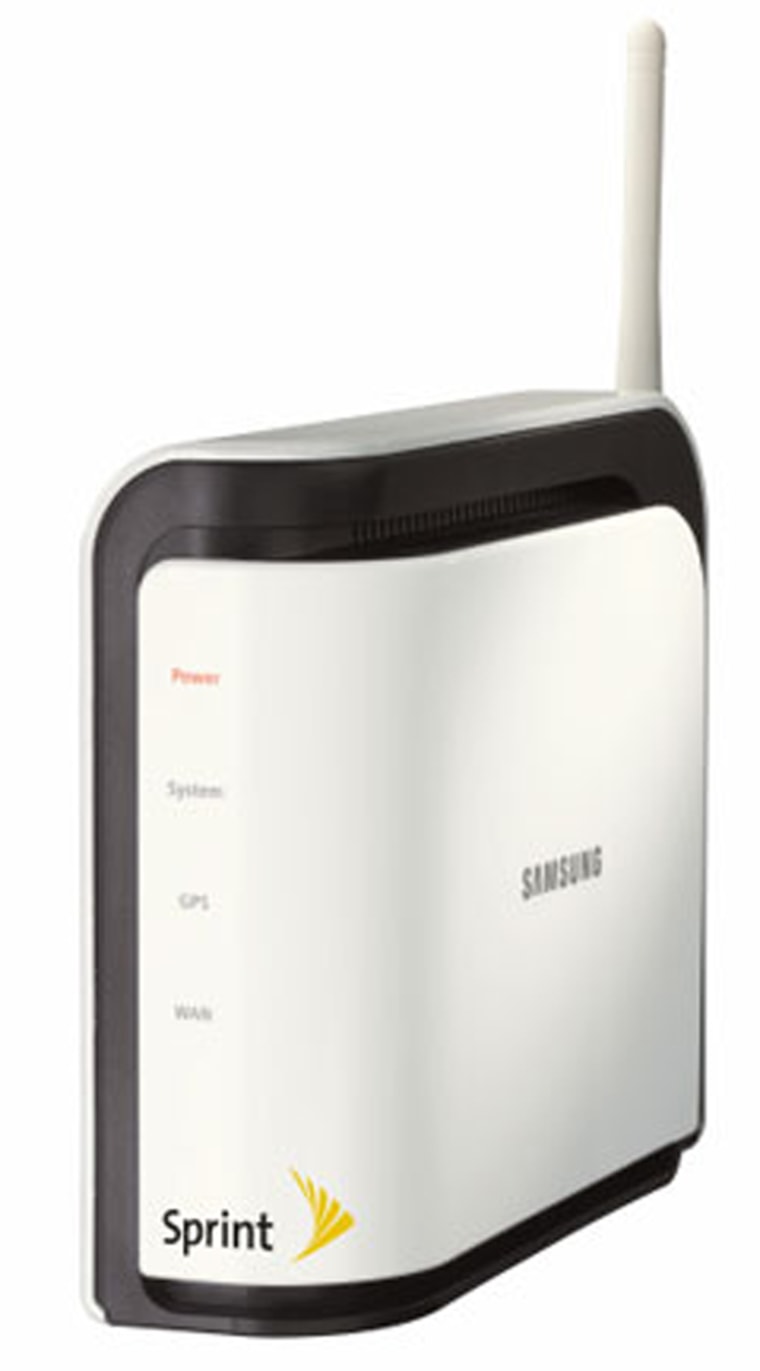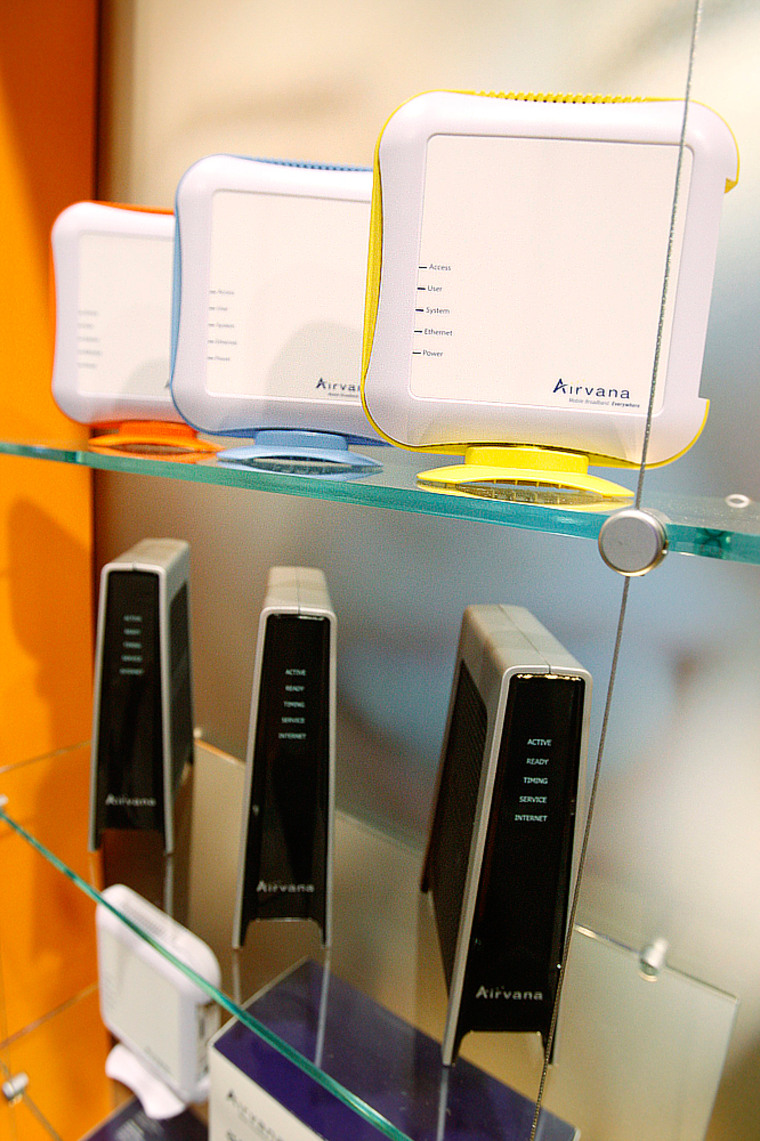Mark Milliman lives north of Boulder, Colo., and his family’s home is situated in a bit of a valley. Lovely location, but lousy for cell phone reception inside the house.
He was a perfect candidate for help from a device known as a femtocell, a sort of small cellular tower in a box that resembles a wireless router, and helps boost indoor cell coverage.
Last fall, Milliman ordered a femtocell through his cell phone carrier, Sprint, which is testing the device in the Denver, Indianapolis and Nashville areas.
Sprint’s Airave, as it is called, was connected to his high-speed Internet service, which must be used in conjunction with the femtocell in order for it to work.
“It solved the problem,” he said.
Femtocells represent a new frontier, and a new hope for frustrated cell phone users who battle dropped calls and bad reception from inside the walls of their homes. However, there are still obstacles, including the technology itself, the subsidized cost and use of the devices, and divided strategies among the four major cell phone carriers about efforts to boost inside-the-house coverage.
Sprint has its Airave trials, using femtocells which transmit signals to the cell operator via the Internet. It’s similar to the technology of Voice over Internet Protocol, used by phone services like Vonage and Skype. T-Mobile offers a “HotSpot@Home” program, which relies on a home wireless network alone to boost the signal of a Wi-Fi equipped cell phone.
AT&T and Verizon, which also have landline customers, are saying little about such coverage-boosting options, which could threaten their existing customer bases as more Americans leave landlines behind for cell phones.
In the United States, 12 percent of the adult population is now using cell phones only, up 2 percentage points from the latter half of last year, according to a recent survey by the Centers for Disease Control and Prevention.
The percentage is much higher the younger the age group. One in four people ages 18 to 24 use only cell phones, as do 29 percent of those ages 25 to 29, the survey found.
Landline-based phone providers “are losing customers to wireless anyway, so all operators are looking at femtocells,” said Allen Nogee, In-Stat Research principal analyst for wireless technology and infrastructure.
“They’d rather keep the customers (as wireless users) than lose them to another wireless competitor.”
Femtocell cost is high now
Sprint started testing the Airave femtocell, made by Samsung, last fall. In addition to the $49.99 cost for the device, individual customers pay $15 a month, and families, $30 a month, for the improved coverage, which works with any Sprint phone. Customers can also have unlimited talk time in their homes without using their wireless minutes. The fee is on top of their regular monthly bill.

Required is a high-speed Internet connection for the femtocell, which can be plugged directly into a cable or DSL modem, or a wireless router. The femtocell sends voice and data through the Internet connection to Sprint’s network, which then routes the signal to its destination.
Last September, the company said it planned to make the Airave available to customers nationwide this year. But when asked recently about that timetable, and how the trials are going, Sprint declined to comment.
“At this time, we are not providing interviews on our femtocell offering, as it is in the limited launch stage,” said Emmy Anderson, Sprint communications manager.
While customers are charged $50 for the devices, their true cost is higher, around $250 each, according to Nogee.
“Operators are planning to subsidize these things, because customers won’t pay that much money for them,” said Nogee.
Price drops likely won’t happen until volume does. ABI Research said in a recent report that it expects 100,000 femtocells to be shipped this year, and that “2009 will show the fruits of the more than 20 trials currently underway.”
By 2010, the interest and volume will be there so that a cost of $100 per femtocell is “within reach,” said Stuart Carlaw, of ABI Research, in a statement.
Femtocells — and improved indoor cell coverage — will become more important as a growing number of third-generation, or 3G, phones come onto the market.
They will make Web surfing and e-mailing from phones faster. But, if they’re used inside a house where there isn’t enough cell reception, customers will become more frustrated than they already are about the lack of indoor coverage.
Technical, practical issues remain
T-Mobile users must have one of the company’s six Wi-Fi-enabled phones, such as the BlackBerry Curve or Nokia 6086, in order to get better indoor coverage by connecting wirelessly to a high-speed network at home. By the end of the year, four more phones will be added to the mix.
Customers pay $9.99 a month for unlimited calling from home for single-line plans and “family-time” plans of up to five lines.
T-Mobile, too, is saying little about how the service is going. In a statement, a company spokeswoman said that since launching the service nationwide in June, “we’ve seen strong adoption by young adults, as well as families looking to save money and simplify their lives by having only one phone.”
“None of these operators are talking at all, but the fact that most of them are still quite interested after running trials is a good sign,” said Nogee of In-Stat. “There are potential problems from interference and roaming, and the price of these femtocells is still relatively high.
“But considering how fast they’ve come about, and that there’s still so much interest in them, that’s encouraging.”
Among some of the technical and practical issues that remain to be addressed with femtocells, he said:
- Because the devices are small and portable, “a person can pick them up and move them anywhere.” Cellular operators need to have ways to authenticate that the femtocell is located within the areas in which they’re licensed to operate.
- Femtocells need to negotiate — but not interfere — with other cell base stations in an area. “If you live in an apartment complex, and your next-door neighbor is a customer of the same operator that makes the femtocell, you have to make sure it doesn’t interfere with the neighbor’s signal,” which could be 10 miles away, Nogee said. “Even though that little femtocell isn’t powerful, it is very close to that other person.”
- Cell phone operators are relying on the goodwill of high-speed Internet providers by using their bandwidth to operate femtocells. “If, for example, it’s not Sprint you’re getting your broadband service from, you’re at the mercy of your broadband provider,” Nogee said. “To date, they’ve been letting the signals go through, but there’s this network neutrality type of argument going on that hasn’t been resolved yet.”
Milliman, of Colorado, enjoyed the improved reception he got from his femtocell. But a Sprint software update to the Airave wound up creating a conflict with a “firmware bug” in his Internet router.
He decided he “didn’t want to spend $100 for a new router,” and ended his trial run with the service. He also didn’t like paying the extra monthly charge on top of his regular cell bill.
“I told Sprint that they ought to have a different tier of service for this,” he said. “They’re trying to go to landline replacement for people who want to use their cell phone for everything. But there’s a whole class of us out there who just need a signal booster, and not a home phone replacement.”
